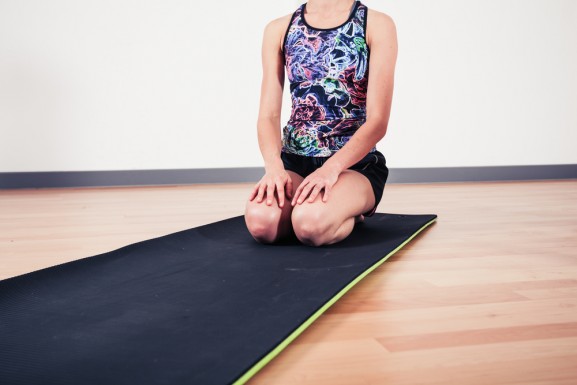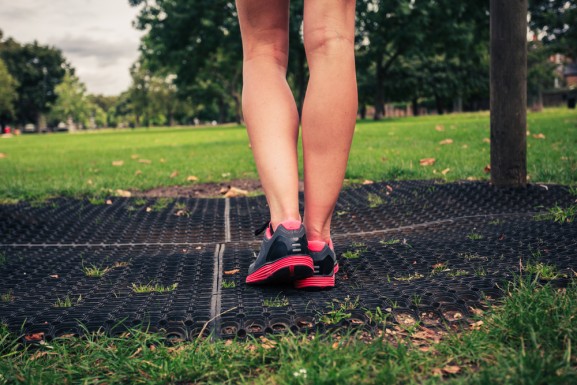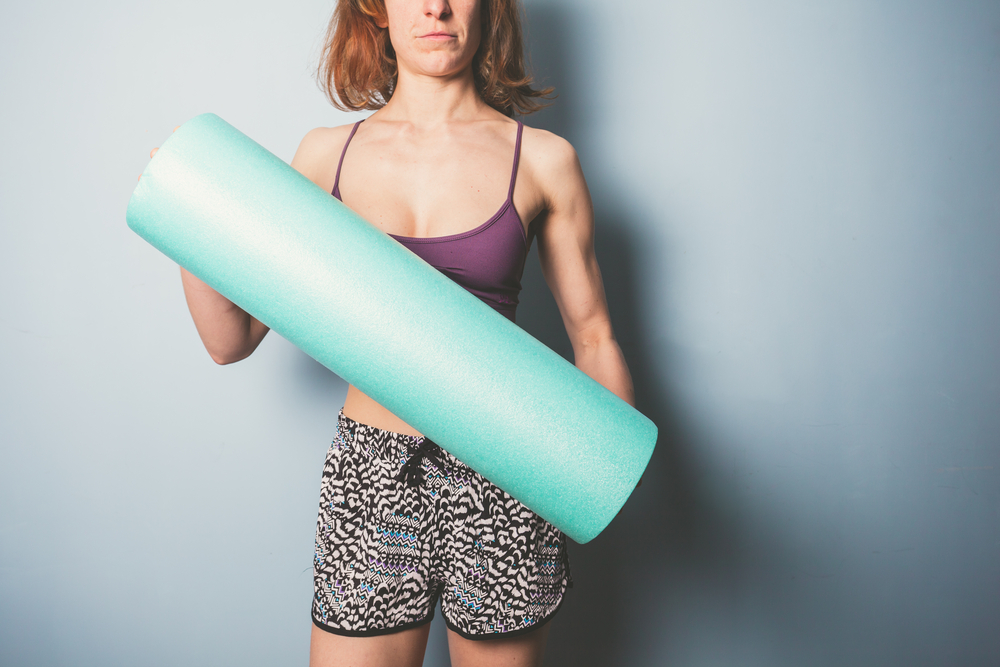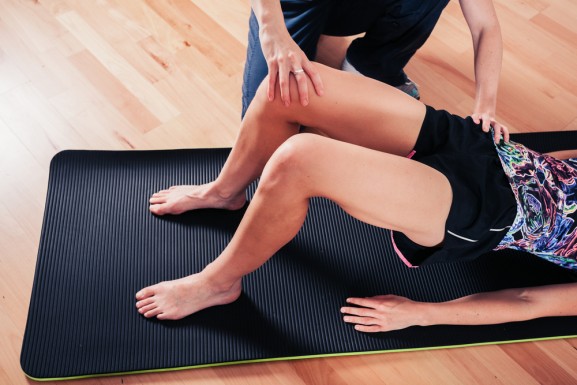Exercise can improve circulation, prevent chronic disease (i.e. Cardiovascular disease), manage and/or prevent metabolic syndromes (i.e. pre-diabetes, and type 2 diabetes mellitus), help manage anxiety and moderate depression, and help manage and prevent weight gain, just to name a few. But did you know that it can also boost your fertility? Being healthy is important for reproductive health so of course of equal importance is a healthy diet with the essential vitamins and minerals needed for prenatal support, but here I am going to focus on strategies and benefits of physical activity while you are trying to conceive.
One of the catch 22s of exercise and fertility is that once you get pregnant most doctors will not recommend you begin an exercise program unless you had previously been exercising, even though exercising throughout your pregnancy is not only safe but recommended if possible for the health of you and your baby! So it’s important to get started now, while you are still trying to conceive.
Exercise may help make your pregnancy easier as well. Women* who were more physically active tended to have less sickness associated with their pregnancy, according to a Danish cohort study looking at lifestyle factors including PA and associations with sick days, or absences from work, during pregnancy (Hansen ML, Thulstrup AM, Juhl M, Kristensen JK, Ramlau-Hansen CH, 2015). Some factors that had a negative effect on sick days included overweight/obesity and a time to pregnancy of over 12 months (trying to conceive for over a year).

Another recent article that looked at several studies reporting on assisted reproductive techniques and lifestyle found that too little exercise had a negative association with success as did exercising too much or too intensely (Zeinab, H., Zohreh, S., & Gelehkolaee, K. S, 2015). The study stated, according to their data, that “every hour of exercise per week reduced infertility by 5%”. But another study showed that women* who were exercising regularly for over 4 hours per week in the year leading up to ART, saw a decrease in as much as 40% in successful implantation (Sharma, R., Biedenharn, K. R., Fedor, J. M., & Agarwal, A. 2013). So what gives?
This review recommends 3x per week at 45-60minutes per session. I would add specifically that 3 hours per week is great, and to keep the intensity down.
How do you measure intensity?
Exercise physiologists have numerous techniques to gauge a client’s intensity level. They usually measure it as a percentage of your total exercise capacity. Staying at a moderate intensity, which is what is recommended, is usually somewhere between 50-70%. Now is probably not the time to start a high-intensity interval training (HIIT) program, even if that is all you hear about from your fitness enthusiast friends. You can look at your heart rate if you have a monitor 50-70% of your maximal heart rate is a good range to stay in. (220 – your age is a fairly good estimate of your maximal heart rate, but note that monitors on gym equipment are rarely accurate). Note that if you are pregnant, your resting heart rate may increase as a response to the need for extra blood supply to the baby and therefore may not be an accurate way to measure intensity. However, using a rate of perceived exertion scale to keep yourself in the moderate zone is also a good choice. This is typically anywhere from 12-14 on the Borg scale of 6-20. 6 represents being at rest and 20 represents maximal exertion. This is in the range of somewhat hard to hard. While your heart rate and respiratory rate will be increased, you should still be able to talk and hold a conversation.
Be aware of signs and symptoms of overtraining. Rest is essential for gains in cardiovascular health and muscular strength. If you find yourself overly fatigued, sick, and/or with muscle soreness that isn’t going away, give yourself a break and reassess your fitness program.
Core strength is important to focus on while trying to conceive and during 1st trimester of pregnancy. As the belly expands, it becomes more difficult to strengthen your abdominal muscles and these will play a large role in labor and delivery. This is especially true your transverse abdominals, which are deep muscles that wrap around your abdomen. You can find the transverse muscles using a laughing technique. Forcefully exhale twice saying “ha ha” and you can feel abdominals tightening up. Pilates instructors often cue tightening these muscles by telling clients to pull their belly button up and in toward the front of the spine, or my favorite “zip up those high-waist skinny jeans!” Try targeting your pelvic floor muscles at the same time bringing everything up and in will help you develop a solid core.
My favorite core exercises are the plank and the Pilates series of 5. These are exercises that can be done anywhere in a minimal amount of time. Start with 30 seconds in a forearm plank, and then, over time, slowly increase the plank time up to 2 minutes, remembering to breathe throughout.
While not a physical activity, meditation is something everyone can do, and there have been numerous studies recently looking at the positive effects. It doesn’t take much time (or energy!) and can be a great way to start your day, end a workout, or take a breather in the middle of a hectic workday. Benefits include reduced stress and anxiety, and improved memory and attention.
Yoga is generally seen as an excellent “gentle” exercise but this really depends on the teacher and studio. Hot yoga may not be right for you, the heat increases your heart rate and you can easily become dehydrated if you don’t get enough water after class. Yoga also has a tendency to breed a competitive culture so choose your classes wisely, you want to strengthen, tone, and meditate through movement, but it can be easy to go overboard with anything. The same may be the case for any group class whether it is Zumba or cycling. Continually check in with yourself, and your RPE to make sure you aren’t overdoing it. You want to feel refreshed after exercise, not completely wiped out.
I haven’t had the time to keep up with daily dance technique classes like I was used to in high school and undergrad. To keep fit during grad school I took up running a cross-training program. It became a solace for me, an outlet to burn some energy after sitting at my computer writing papers and studying and then sitting in lectures while my teachers told me about the dangers of sitting (Katzmarzyk, P. T., Church, T. S., Craig, C. L., & Bouchard, C. (2009). I found that keeping active throughout the day was also important to my health and well-being. I began to wear a fitness tracker that alerted me when I was idle for over thirty minutes, I started to walk around more during my day, take the stairs whenever I could walk around the block when at work, and whatever else I needed to do to be more active. I’ve found that over the past two years while doing this, I’ve been able to keep a healthy weight, I’ve had more energy and my mind has felt more focused. Stress and anxiety play a role in your journey to conceiving; because exercise puts stress on your body in a controlled manner, it is a way to train your body on how to deal with stress in other areas of your life. It is so easy to fall into a routine of work and the daily grind, but keeping active is really the miracle pill that we’ve all been looking for; it’s just not quite as easy as taking a pill.

If you are looking to start a family, you might be thinking that starting an exercise program should be pushed to the bottom of your priority list, but I encourage you to reconsider. It doesn’t have to be complicated, or too vigorous (remember moderate intensity is the goal) but it does need to be planned. Take a few brisk walks during the week. Try out some new fitness classes. Look at your daily routine, even at work, and find places where you can increase your physical activity. Maybe purchase a pedometer, try to make it to 10,000 steps each day. Get creative, make it fun, and then let us know how you feel.
References
- Hansen, M. L., Ane, M. T., Juhl, M., Kristensen, J. K., & Ramlau-Hansen, C. H. (2014). Predictors of Sickness Absence in Pregnancy: a Danish cohort study. Scandinavian Journal of Work, Environment & Health.
- Zeinab, H., Zohreh, S., & Gelehkolaee, K. S. (2015). Lifestyle and Outcomes of Assisted Reproductive Techniques: A Narrative Review. Global Journal of Health Science, 7(5), p11.
- Sharma, R., Biedenharn, K. R., Fedor, J. M., & Agarwal, A. (2013). Lifestyle factors and reproductive health: taking control of your fertility. Reproductive Biology and Endocrinology, 11(1), p66.
- Katzmarzyk, P. T., Church, T. S., Craig, C. L., & Bouchard, C. (2009). Sitting Time and Mortality from all Causes, Cardiovascular Disease, and Cancer. Medicine & Science in Sports & Exercise, 41(5), p988-1005.
* Language used in the studies referenced.







